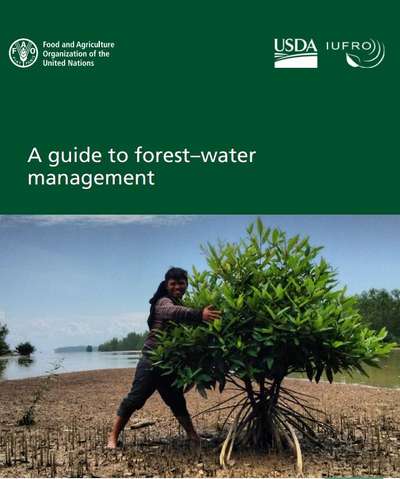
Many people worldwide lack adequate access to clean water to meet basic needs, and many important economic activities, such as energy production and agriculture, also require water. Climate change is likely to aggravate water stress. As temperatures rise, ecosystems and the human, plant, and animal communities that depend on them will need more water to maintain their health and to thrive.
Forests and trees are integral to the global water cycle and therefore vital for water security – they regulate water quantity, quality, and timing and provide protective functions against (for example) soil and coastal erosion, flooding, and avalanches. Forested watersheds provide 75 percent of our freshwater, delivering water to over half the world’s population.
The purpose of A Guide to Forest–Water Management is to improve the global information base on the protective functions of forests for soil and water. It reviews emerging techniques and methodologies, provides guidance and recommendations on how to manage forests for their water ecosystem services, and offers insights into the business and economic cases for managing forests for water ecosystem services.
Intact native forests and well-managed planted forests can be a relatively cheap approach to water management while generating multiple co-benefits. Water security is a significant global challenge, but this paper argues that water-centered forests can provide nature-based solutions to ensuring global water resilience.
Publication Details
- Published: 2021
- Publisher: FAO, USDA and IUFRO
- ISBN-13: 978-92-5-134851-2